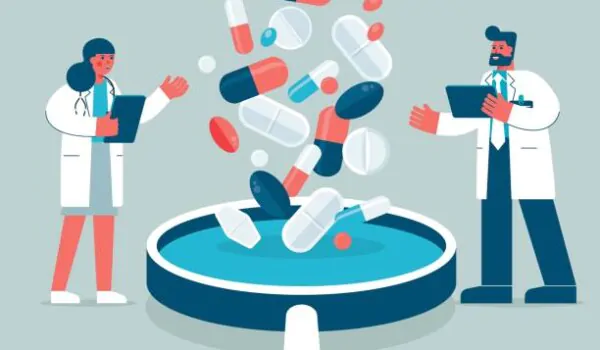
Provide an in-depth explanation of how penicillins interfere with bacterial cell wall synthesis. Discuss how penicillins bind to penicillin-binding proteins (PBPs), disrupting the cross-linking of peptidoglycan chains, thereby weakening the bacterial cell wall and promoting bacterial cell lysis and death.

Penicillins are a class of antibiotics that work by preventing the formation of bacterial cell walls, thereby causing bactericidal (killing) effects in bacteria. Penicillin-binding protein (PBP), or transpeptidase, is an enzyme that is the main target of penicillins. It is essential for the cross-linking of peptidoglycan chains found in bacterial cell walls. Penicillins work by inhibiting these enzymes, which kills bacteria.
Interference with Peptidoglycan Cross-Linking: The primary constituent of bacterial cell walls is peptidoglycan, which resembles a mesh. N-acetylglucosamine (NAG) and N-acetylmuramic acid (NAM) residues alternate in long polysaccharide chains that are cross-linked by short peptide chains to form peptididoglycan. The bacterial cell wall gains strength and stability from the creation of cross-links between neighboring peptide chains, which is catalyzed by transpeptidase enzymes.
Penicillin-Binding Protein (PBP) Binding:
The D-Ala-D-Ala dipeptide, which is present in the peptide side chains of peptidoglycan, has a structural homolog in penicillins. They competitively attach to the active site of transpeptidase enzymes, especially penicillin-binding proteins (PBPs), which are necessary for cross-linking peptidoglycan strands, and resemble the structure of D-Ala-D-Ala.
Penicillins, once attached to PBPs, limit the activity of transpeptidase enzymes, preventing them from producing the cross-links required for the correct assembly and integrity of the bacterial cell wall. This results in the prevention of cross-link formation. In the absence of cross-links, the peptidoglycan layer becomes structurally fragile and vulnerable to osmotic pressure, which eventually causes the bacterial cell to lyse (burst).
Activation of Autolytic Enzymes: Penicillins have the ability to activate bacterial autolytic enzymes, such as autolysins, in addition to blocking transpeptidase activity.